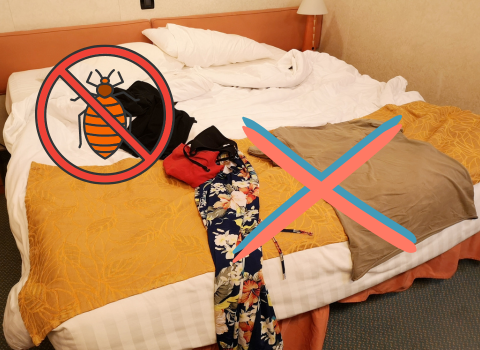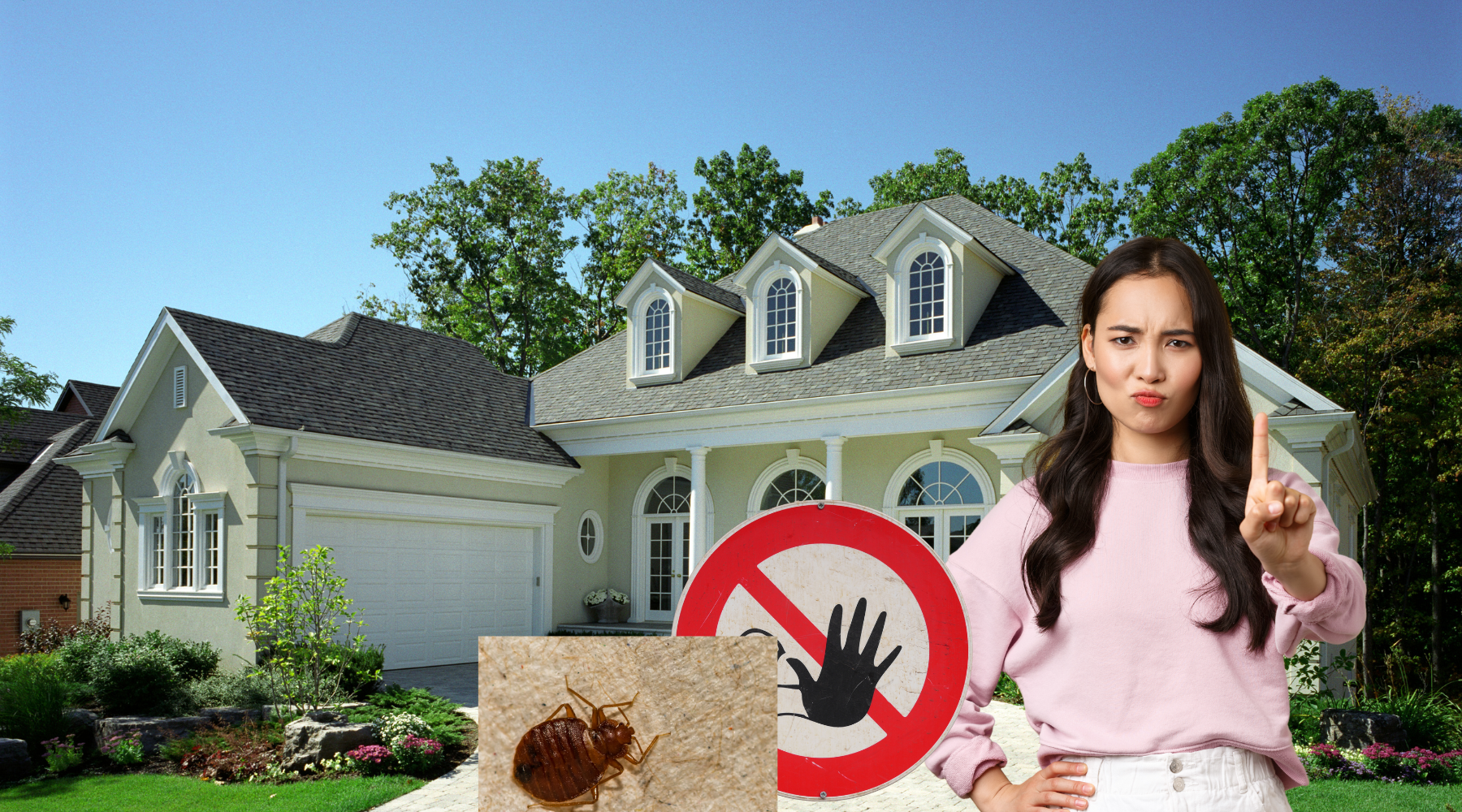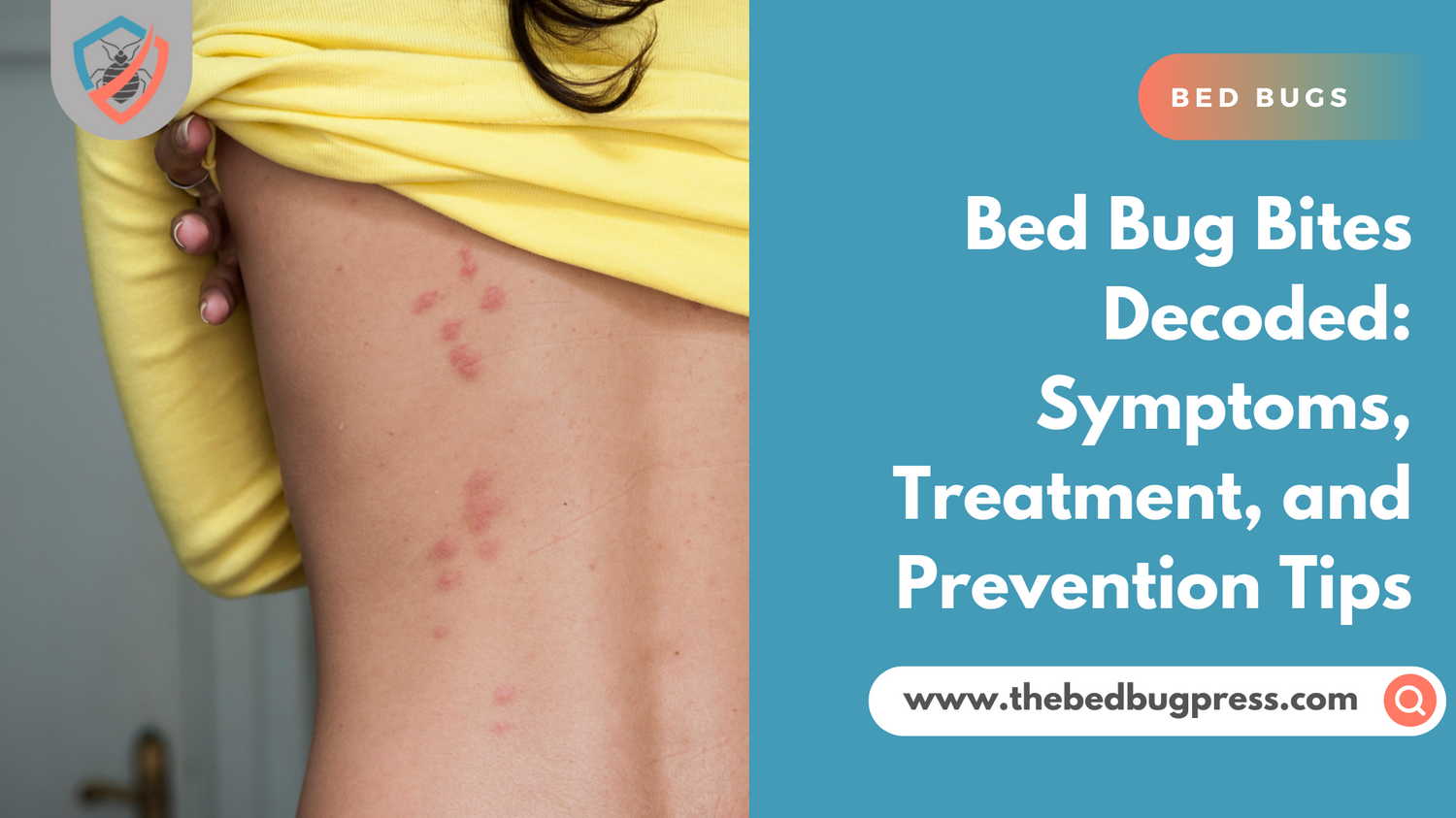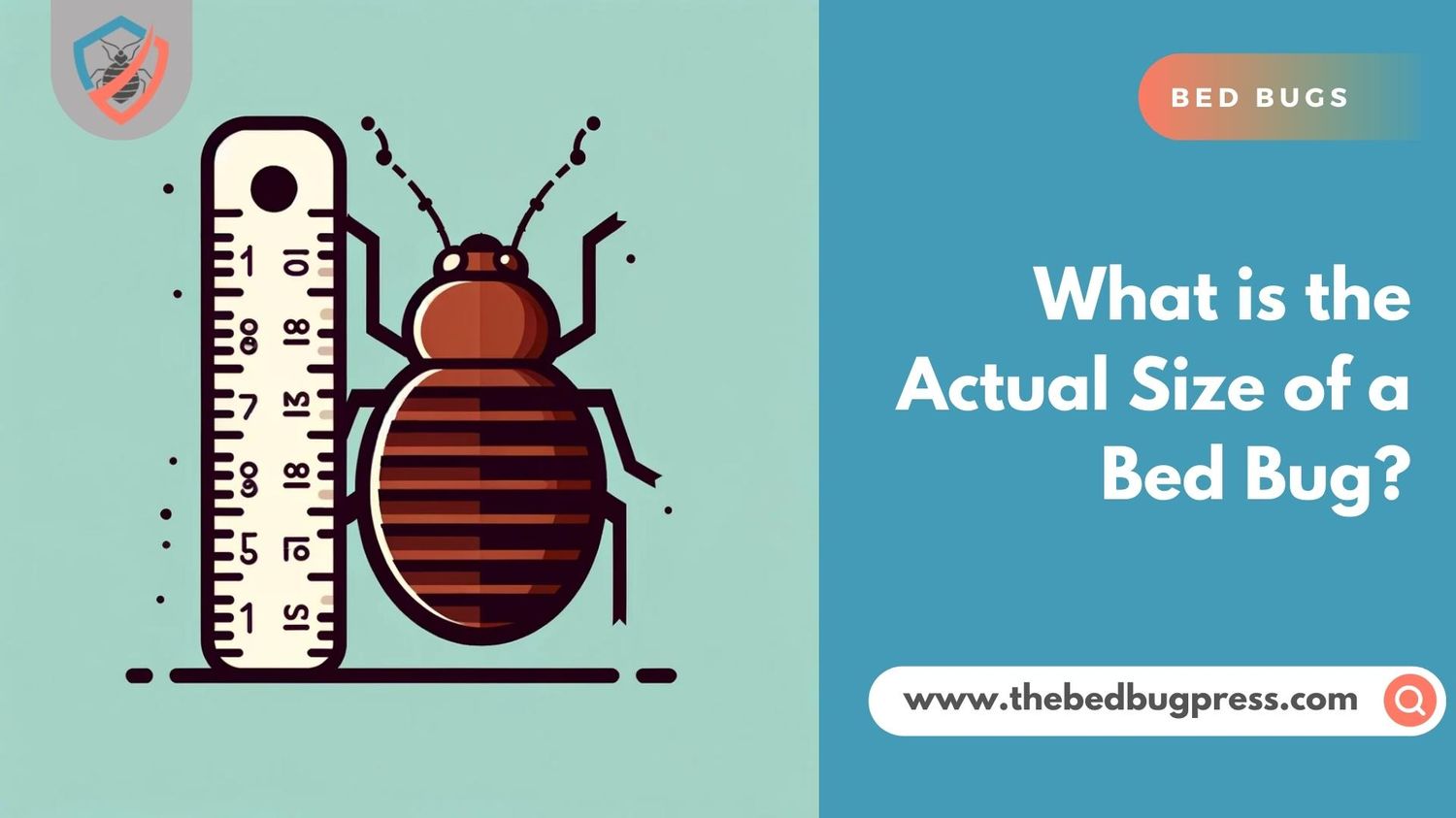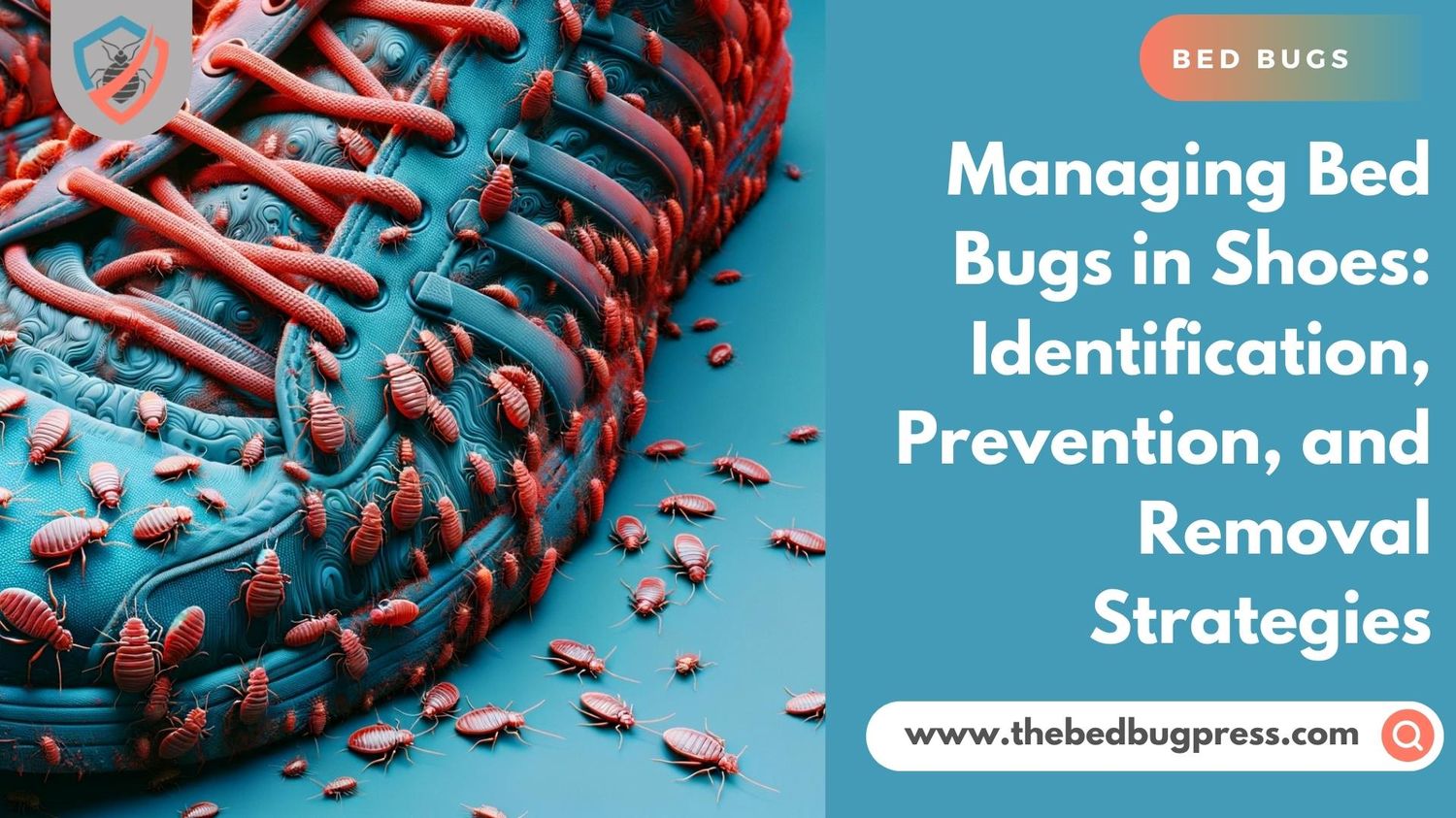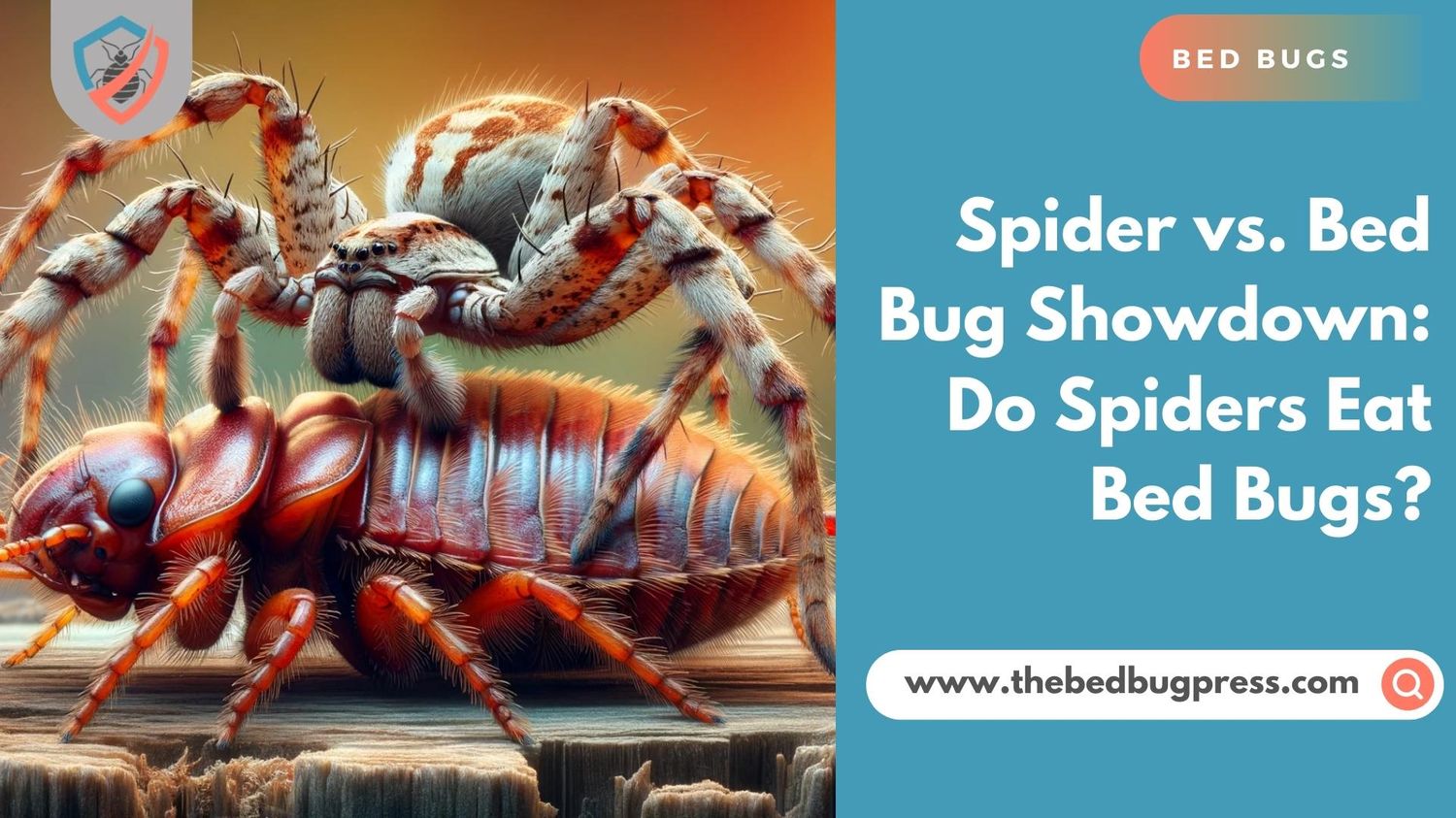Dealing with bed bugs can be a bothersome issue. Unfortunately, they can be elusive and challenging to prevent. That’s why it’s crucial to familiarize yourself with techniques for detecting, treating, and preventing bed bugs. This comprehensive guide will walk you through each step, enabling you to maintain a clean and pest-free home.
Regardless of whether you’re a homeowner, renter, or landlord, it is essential to recognize and address bed bug concerns before they escalate into an infestation.
Let’s begin by identifying the signs of bed bug activity, so you can be vigilant in your observations. Next, we will discuss effective measures to safeguard yourself against encountering bed bugs while traveling or visiting other people’s residences. Lastly, I will provide valuable tips on the most effective methods to prevent and manage bed bug infestations within your own home.
By the time you finish reading this guide, you will possess all the necessary knowledge to ensure a pest-free environment in your home!
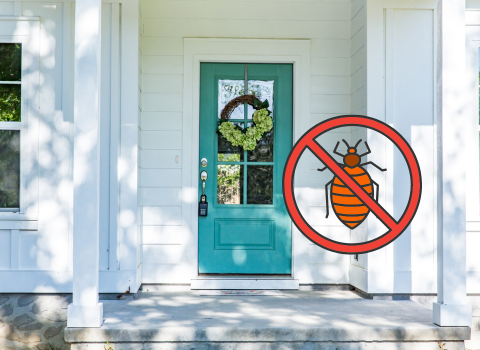
How to avoid bed bugs?
Do you want to protect yourself from the nightmare of bed bugs? Whether you’re at home or traveling, follow these tips to prevent bed bugs from taking up residence in your life.
First and foremost, inspect your surroundings. When staying in a used hotel room, motel, or other lodging facility, look out for signs of bed bugs such as black marks on mattresses or furniture. To be extra safe, place your luggage on a dresser away from the bed.
When shopping for second-hand furniture, inspect closely for bed bugs or bed bug eggs. Bed bugs and bed bug eggs can be commonly found around the seams and folds of mattresses and box springs. If you find any signs of bed bugs, it’s best to leave it alone and keep searching elsewhere.
Finally, practice good cleaning habits at home by vacuuming regularly and laundering all of your linens every week in hot water (at least 120 degrees Fahrenheit). This will help eliminate any existing bed bug infestations while helping you stay vigilant against future ones.
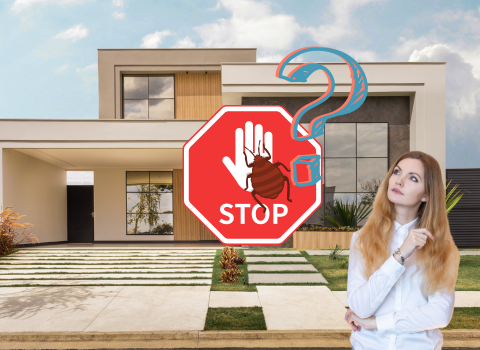
How to Prevent Bed Bugs: What is IPM for Bed Bugs
You’ve heard horror stories about bed bugs, but you want to make sure that you remain vigilant against them. The best way to do that is through Integrated Pest Management (IPM). IPM is an effective and eco-friendly approach to pest control that relies on a combination of techniques. This can include inspections, monitoring of infestations, non-chemical methods like traps, and even chemical applications if necessary.
Here are a few of the basics when it comes to IPM for bed bugs:
Inspect before you move into any new space
Take the time to examine every nook and cranny before moving in. Look for signs of bed bug presence such as small brown spots on mattresses or bedding.
Check regularly if there has been an infestation
Monitor your space frequently with the help of sticky traps or special lamps used to detect bed bugs.
Practice good housekeeping
This should go without saying but keep your space clean and tidy since clutter can attract bed bugs. Make sure to launder items like bedding often in hot water and dry on high heat settings.
Use non-chemical methods first
Consider using physical controls like traps or vacuuming as your first line of defense against bed bugs. It would help if you only considered using pesticides as a last resort when other methods have failed.

How to Prevent Bed Bugs: Where Bed Bugs Come From
The main cause of bed bugs is human activities such as travel, international traveling, and the movement of furniture, mattresses, and other second-hand items. Bed bugs can be found in many places including homes, businesses, hotels, and even public transportation. When these things are moved from one place to another, bed bugs can hitch a ride and spread from one location to the next.
To prevent bed bugs from infesting your home or business, it is important to be mindful of these activities and know how to recognize when something might have brought bed bugs home with it. Here are a few steps you can take:
Be aware when traveling and carefully inspect any second-hand items before bringing them into your home or business.
Check furniture, mattresses, and clothing for any signs of bed bug activity such as rust-colored stains on fabrics or live bed bugs crawling out of crevices and cracks.
Vacuum carpets regularly; vacuum cleaner bags should be disposed of in an outdoor bin as soon as you are done cleaning.
Wash sheets, blankets, curtains, and other fabrics at least once a week using hot water (above 54 degrees Celsius) to kill any possible bed bugs or eggs that may have been brought into your home on these items.
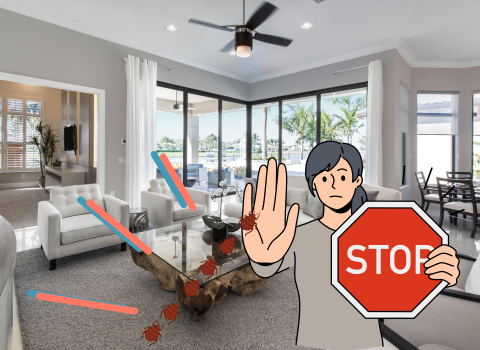
What is the Main Cause of Bed Bugs?
Bed bugs are tiny insects that feed on human blood. But what is the main cause of bed bugs? Unfortunately, there is no single answer to this question. Bedbugs can come from many sources, including secondhand furniture, luggage, new beds, used clothing, and other items brought into your home.
Secondhand furniture and used clothing
When you purchase secondhand furniture or used clothes, these items might be carrying bedbugs on them. Bedbugs can hide in cracks and crevices in mattresses, bed frames, or dressers — making them difficult to detect when you’re shopping for used furniture elsewhere. Used clothes and fabric items can also carry bed bugs into your home, so be sure to inspect any fabric item before bringing it indoors.
Hotel stays
If you stay in a hotel or other temporary accommodation, you could be bringing bedbugs back from your travels without even knowing it! Bedbugs typically live in beds and mattresses, but they can also hide in carpets and upholstery, so always carefully inspect the room before settling in for the night.
Visitors
If you have friends or family visiting your home, they might unwittingly bring bedbugs with them, especially if they’ve recently stayed in a hotel. It’s best to ask visitors to inspect their luggage for signs of bedbugs before entering your home, just so you can rest assured that no unwelcome visitors have snuck in!
How to Prevent Bed Bugs: A Simple Guide
Bed bugs can be a nuisance and a source of frustration for homeowners. Bed bugs can infest your home and cause discomfort and inconvenience. However, with some proactive measures, you can prevent bed bug infestations and maintain a pest-free environment.
Reduce Clutter
Clutter in your home can be a haven for bed bugs. They usually hide in dark, cluttered places such as dresser drawers and behind headboards.
Keep your home clean and tidy to prevent bed bugs from taking up residence. Vacuum carpets and furniture, dust shelves, and drawers, and keep all items off the floor. Store items in plastic bins with secure lids to help reduce pest activity. Here are some other tips for reducing clutter:
Reorganize Closets for Efficient Storage
One effective way to maintain an organized closet is by categorizing clothing items according to their types. By separating them into distinct groups, you can easily locate specific items when needed. Storing seasonal clothing in plastic containers with sealed lids helps protect them from dust, pests, and other potential damage.
Prevent Bed Bug Infestations
To minimize the risk of bed bug infestations, it is crucial to store items that can attract bed bugs properly. Extra blankets, pillows, stuffed animals, and similar objects can serve as potential food sources for bed bugs. When not in use, store them away safely and securely, such as in sealed containers or bags.
Declutter and Eliminate Hiding Spots
Reducing clutter is an essential step toward maintaining a clean and organized living space. Take the time to assess your belongings and identify items that are no longer needed or used. By donating or getting rid of these items, you can eliminate unnecessary clutter and create more open space.
Consider Storage Services for Seasonal Items
If you find that seasonal items are taking up too much space in your home, consider utilizing a storage service. These services provide secure facilities where you can store your seasonal belongings until needed. By relocating these items to an off-site location, you can significantly reduce clutter within your home, making it easier to identify and address any potential bed bug infestation or bed bug problem promptly.
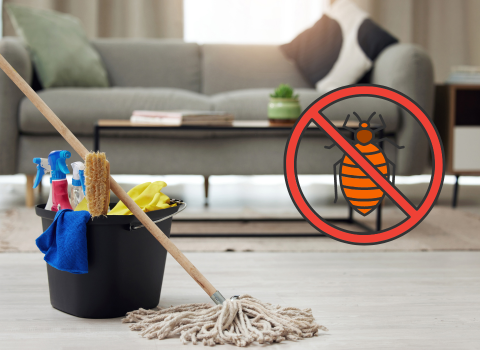
Regularly Wash and Heat-dry Bed Sheets, Blankets, Bedspreads, and Floor-Touching Clothes
Do you want to keep those pesky bed bugs at bay? Make sure to regularly wash and heat-dry your bed sheets, blankets, bedspreads, and floor-touching clothes. That’s right, washing alone won’t do it. To really get rid of the critters you’ll need to make sure that you heat-dry the items as well.
What does this mean? It means you should:
Put the items in your washing machine with hot water (as hot as it will go)
Dry them in a dryer on its highest setting for at least 30 minutes
Wash and heat dry these items regularly, once a week is ideal
By washing and heat-drying these items regularly, you’ll be able to keep any bed bugs in check if they have already been introduced into your home. Of course, this isn’t a guarantee that bed bugs won’t crop up again. If you discover evidence of bed bugs or bed bug bites even after taking preventive measures, it’s important to seek professional bed bug treatment immediately.
Vacuum
One simple step you can take to help prevent bed bugs is to do regular vacuuming. Vacuuming removes not only visible bed bugs but also their eggs, making it a great preventive measure.
Here are a few tips to help you vacuum effectively against bed bugs:
Use a vacuum with strong suction power and high-efficiency particulate arrestance filtration.
Vacuum all of your mattresses, couches, furniture, carpets, rugs, and any other fabrics where bed bugs may be lurking.
Dispose of the vacuum bag after each use in an outdoor bin or trash can to prevent the spread of possible bedbugs living inside the bag.
Consider using an insecticide as an added precaution in particularly susceptible areas such as along cracks and crevices in walls, behind baseboards, or near carpets or furniture edges that may be infested with bed bugs.
Be sure to check any secondhand items before bringing them into your home, especially items such as furniture or clothing that may have been left outside or inside a building known for harboring pests such as bed bugs.
If you are worried about potential infestations, it is best to contact your local pest control specialist for professional advice on how best to deal with bed bug infestation and prevent bed bugs from causing further infestations in the future.
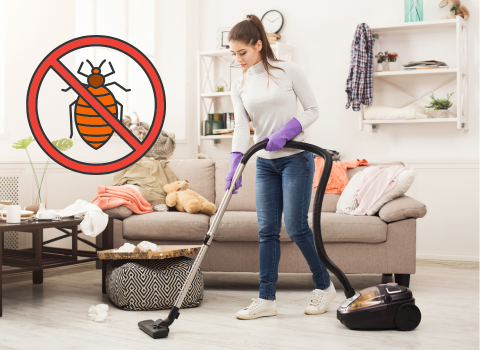
Use Bed Bug-Proof Mattress Covers
A bed bug-proof mattress cover is an important preventative measure to keep bed bugs away. Mattress covers are designed with a material that’s too tightly woven for bed bugs to penetrate, making it impossible for them to get close to you while you sleep.
When selecting a mattress cover, look for one that is:
Specially designed for bed bugs
Easy to remove and wash regularly – it’s recommended to wash them monthly with hot water
Has sufficient elasticity around the edges of the mattress
It’s also essential to take the time and make sure all edges of your mattress and box spring are covered. Bed bugs are notoriously good at squeezing into tight spaces and any uncovered gap increases your risk of an infestation.
Finally, when using a mattress cover, be sure to inspect your own mattress and box springs periodically for any signs of bed bugs or eggs. If you do see any signs, don’t hesitate in contacting a professional pest inspector right away.
Use Bed Bug Monitors
The best way to prevent bed bugs is to stay ahead of the game and use a bed bug monitor. Bed bug monitors are easy-to-use and effective traps that can alert you if a bed bug infestation has begun.
Here’s how they work:
Place the bed bug monitor around your bed, under your mattress, or near any furniture where you suspect there may be potential bed bug activity.
Check the device every few days to make sure there are no signs of bed bugs. If there are, you can start to take action right away and contact a bed bug control professional for further assistance.
Reapply the monitor consistently every few weeks or months (depending on the manufacturer’s instructions) to continue monitoring for any additional infestations of unwanted critters!
Bed bug monitors are an easy solution for anyone looking to check for bed bugs and an effective way to prevent bed bugs from entering their homes in the first place. They provide peace of mind and an extra layer of protection from these pesky bed bugs, ensuring that if there ever is a problem, it is detected right away before it gets out of hand!
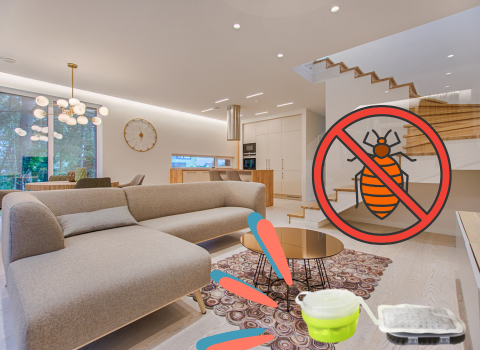
Wash Your Luggage and Clothing after a Trip
Whenever you return from a trip, it’s important to take some time to protect your home from any potential bed bugs. One of the best ways to do this is to wash all of your luggage and clothing, even if it was only in the same building as bedbugs. This will help you avoid bringing any potential bed bugs back with you.
The way to go about this is fairly simple:
Separate your clothing and items by temperature and material type according to washing instructions and separate out any items that can’t be washed.
Use the hottest water setting recommended on clothing labels, which should be at least 120 degrees Fahrenheit (49 degrees Celsius). Higher temperatures are usually better, as long as laundry tags give you the ok.
Give everything a good scrub before washing: Vacuum and dry clean items with special care, using an upholstery nozzle or suction hose for furniture and mattresses if necessary.
Use a washing detergent that has been specifically designed to kill bed bug eggs — regular detergent won’t achieve this level of extermination effectiveness!
If necessary, use a very hot dryer setting after washing and immediately put clean items into tightly sealed plastic bags or airtight containers until needed again. Make sure these items stay clean even after being taken out of storage by examining them for signs of bedbugs before each use or wear!
Inspect Your Furniture Regularly
Preventing bed bugs is all about vigilance and regular inspection. Inspect your furniture regularly, paying special attention to seams and crevices where bed bugs could hide. You should also inspect your bedding and look for signs of bed bug activity, including tiny eggs or droppings.
If you do find signs of possible infestation, it’s important to take immediate action. Here are a few steps you can take:
Vacuum the area regularly to get rid of any possible larvae or adults
Thoroughly clean the area with hot water and detergent
Try to treat the affected area with insecticidal sprays or contact a professional pest control service
Wash all clothing and bedding in hot water on a regular basis
Place encasements around pillows, mattresses, and box springs
Use mattress protectors which can help keep bed bugs from entering your home
Keep furniture away from windows and doors as they may be points of entry
If you’re concerned that your home is infested with bed bugs, it’s important to act quickly to prevent any further spread of the bed bugs within your home. With a bit of effort, you can keep your home free from these troublesome bed bugs for good!
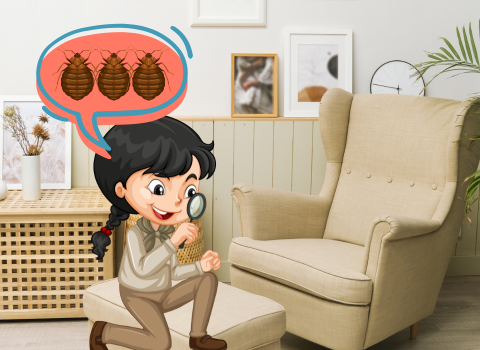
Don’t Bring Your Bedroom Duvet into Other Rooms
You’ve probably heard people say that you should never let your bedroom duvet touch the floor, which is
Don’t Store Items Under Your Bed
If you’re serious about preventing bed bugs from invading your home, it’s best to store items away from your bed and other furniture. Bed bugs can easily hide in items like linens, clothes, and other bedding materials, so if possible, try to avoid storing these items under your bed.
Not sure what to do with all of that clutter? Here are a few ideas:
Use plastic containers with lids:
Using a plastic bag or glass containers with lids is an easy way to quickly store away any items under the bed.
Invest in storage beds:
If you have the extra money and space, you can invest in beds that come with built-in storage. That way, you can keep any items tucked away without having to worry about bed bugs.
Utilize vertical space:
If you’re tight on space, don’t forget that you can also utilize vertical space by using shelves or bookshelves instead of keeping items on the floor.
By following these tips and avoiding storing anything under your bed, you’ll be more likely to prevent any infestations from occurring, so it’s definitely worth taking the extra steps for your peace of mind!
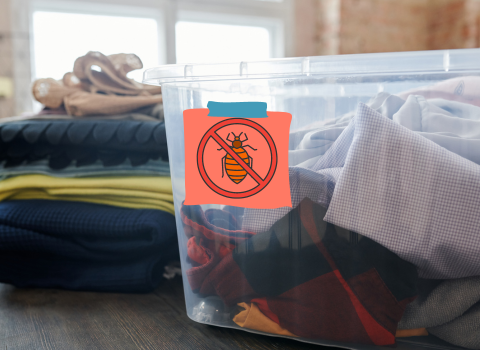
Store Items in Plastic Containers
Storing your items in plastic containers is another way to prevent bed bug infestations. Bed bugs love to hide in soft, warm, and cluttered environments. When you store items such as blankets, extra pillows, or garments in plastic containers bed bugs don’t have access to the materials. Not only will this keep bed bugs out of your living space, but it will also keep dust mites and other pests away!
Make sure the containers are clean and free of debris before storing items in them. Taking an extra step to wipe down the lid and sides of the container will provide an added level of protection against bed bugs that could be hiding underneath or inside the container.
Another great tip for keeping those pesky critters from making their way into your home is by sealing all of the lids. Airtight sealable lids are ideal for keeping bed bugs out and preventing any odors from escaping. They also add an extra layer of protection against water, dust, and other elements that may enter your home through open cracks or crevices near windows or other areas that lead outside.
Whether it is clothing, blankets, pillows, or other items, keep them safe from potential bed bugs by storing them in airtight sealable plastic containers!
How to Prevent Bed Bugs: Keep Clothes off the Bed
Did you know that keeping your clothes off the bed is one of the best things you can do to prevent bed bugs? It might sound pretty simple, but it really goes a long way.
The reason keeping clothes off the bed is important is because bed bugs can hide in your clothes, and making a habit of storing all clothing away on hangers and in drawers will help to keep them from getting into your bed.
Plus, leaving piles of clothes laying around on the floor or on upholstered furniture can create good hiding places or spots for bed bugs that may be present in your room. So always hang them up or store them away in dresser drawers to reduce the risk of a bed bug infestation.
To make sure you are truly protecting yourself from any potential infestations, here are a few more tips:
Keep items off the floor by using shelves and closet organizers.
Vacuum regularly, paying special attention to beveled edges where dirt usually accumulates.
Store shoes in specially designed shoe racks or boxes with secure lids.
When you are traveling, it is also important to remember that clothes can pick up hitchhikers from a hotel room and public transportation. It’s always smart to store them away in plastic bags until you can get back home and do a thorough wash and dry cycle.
